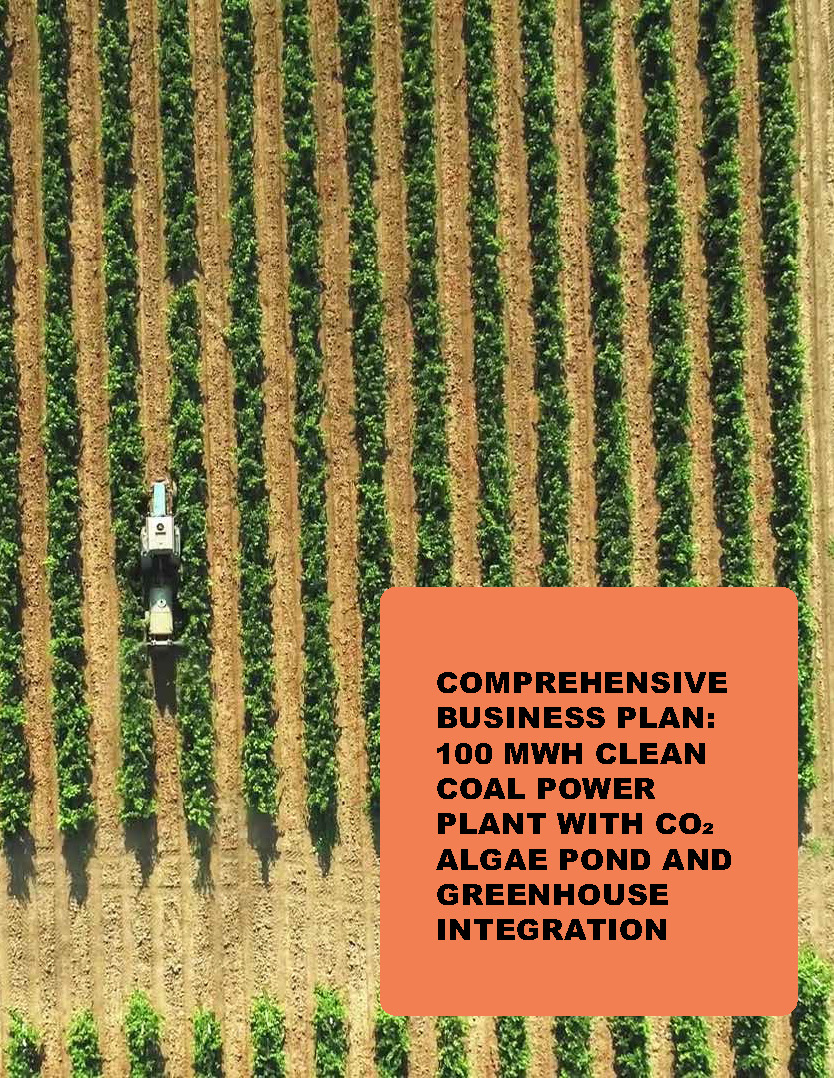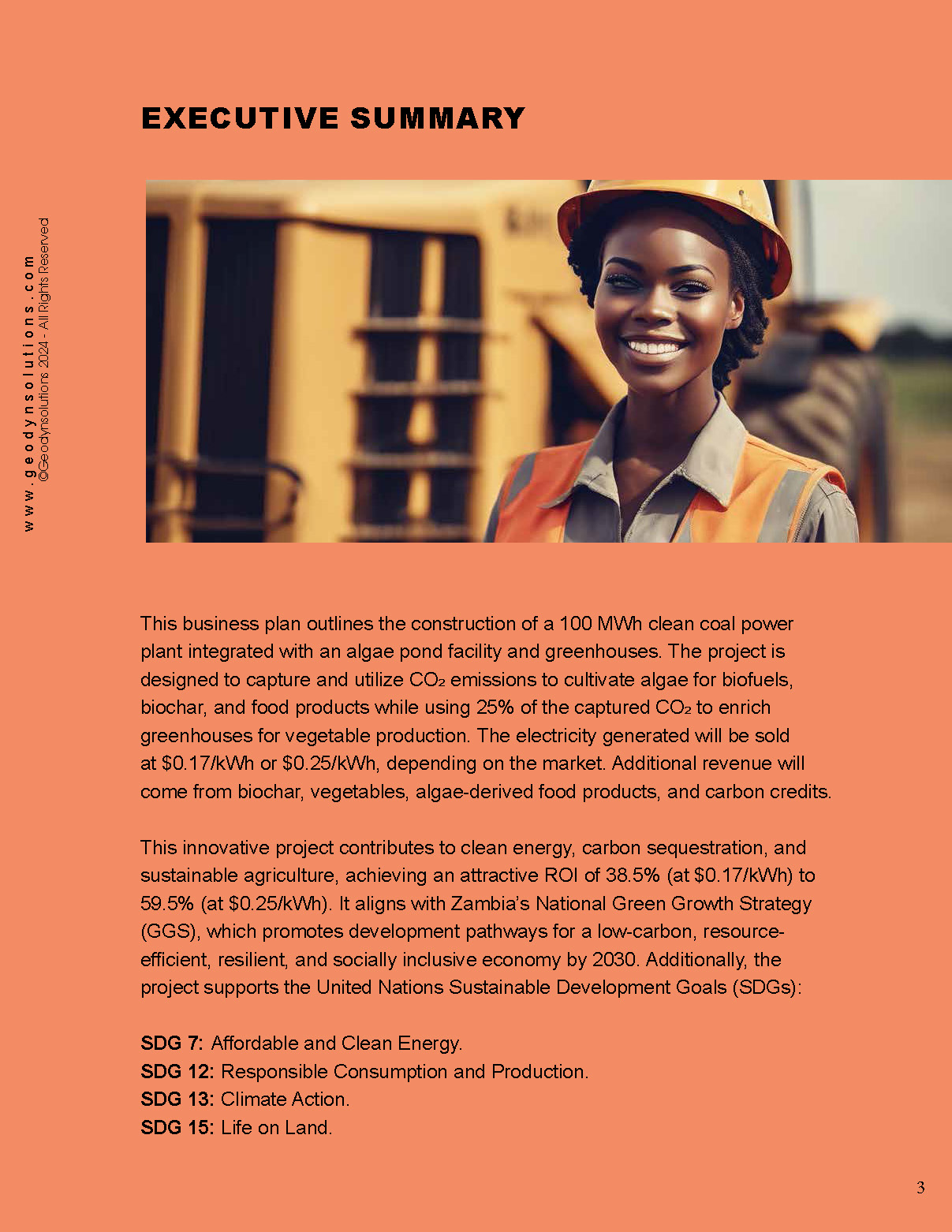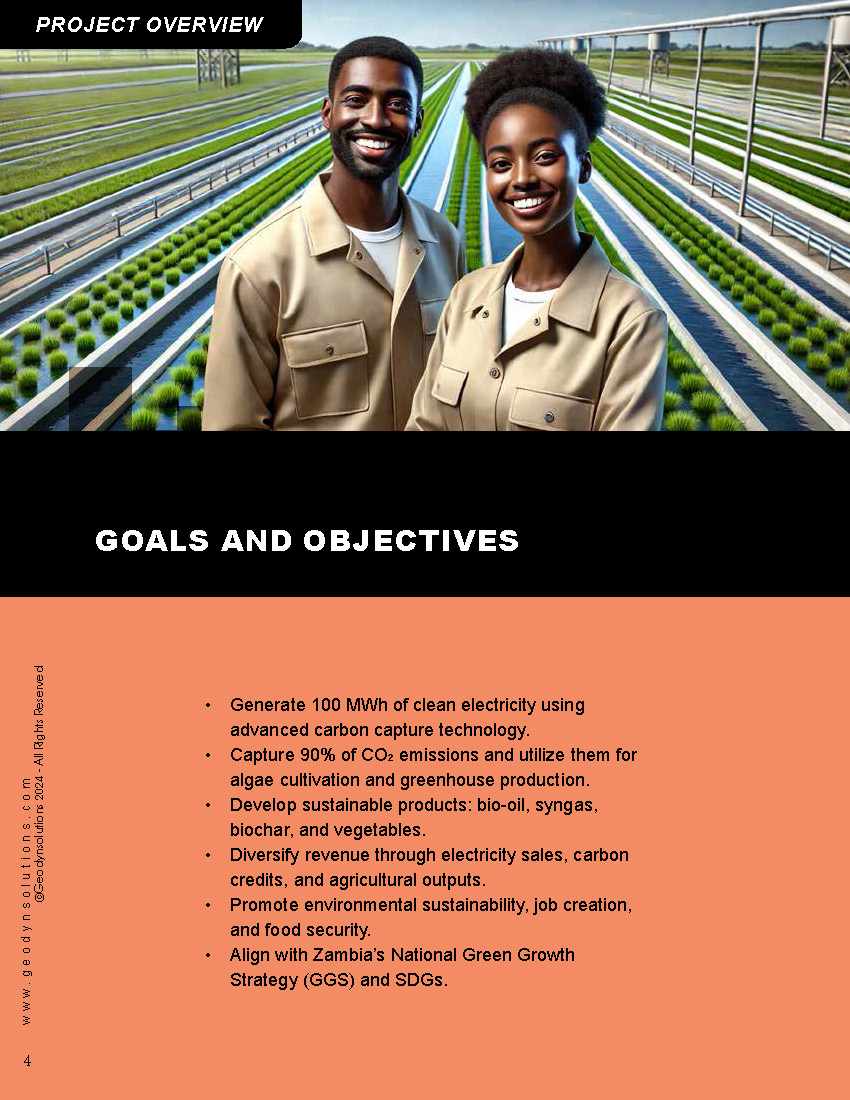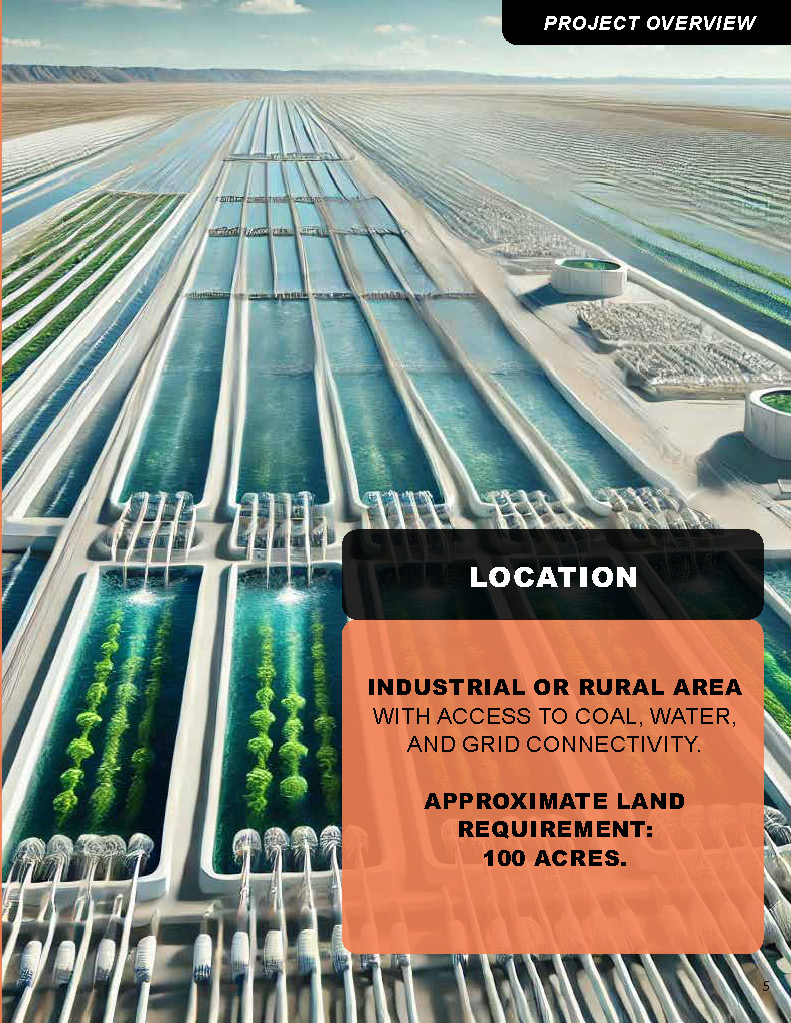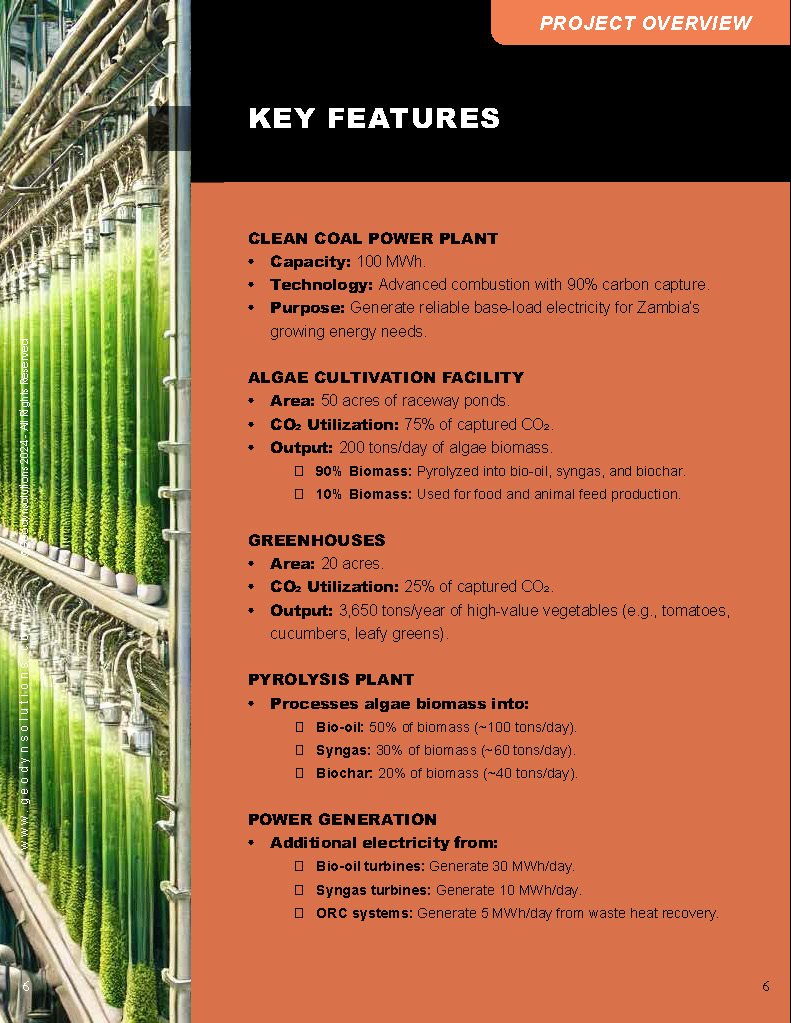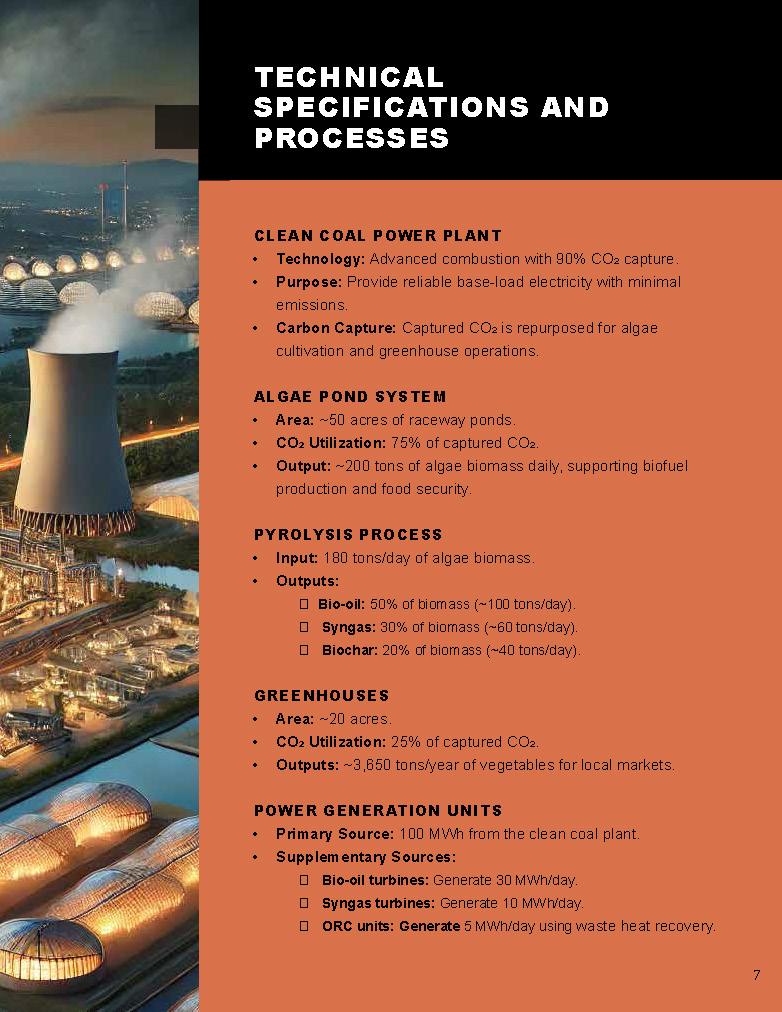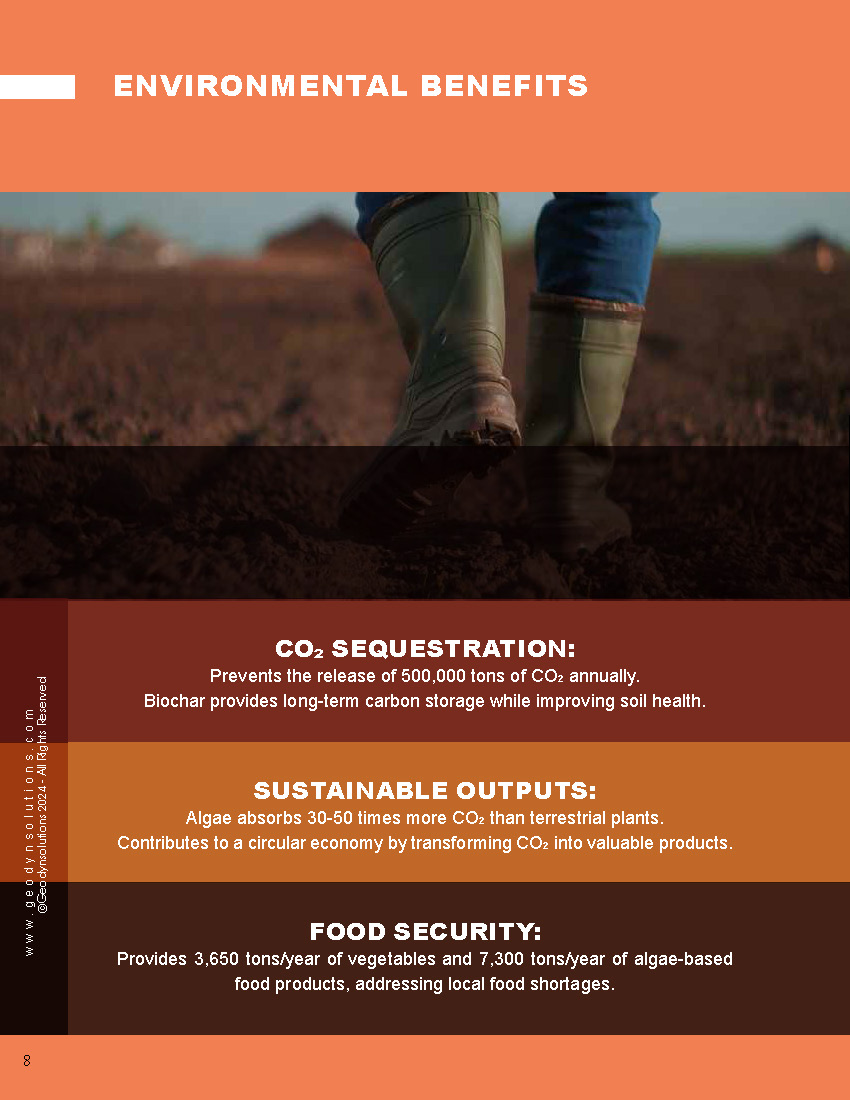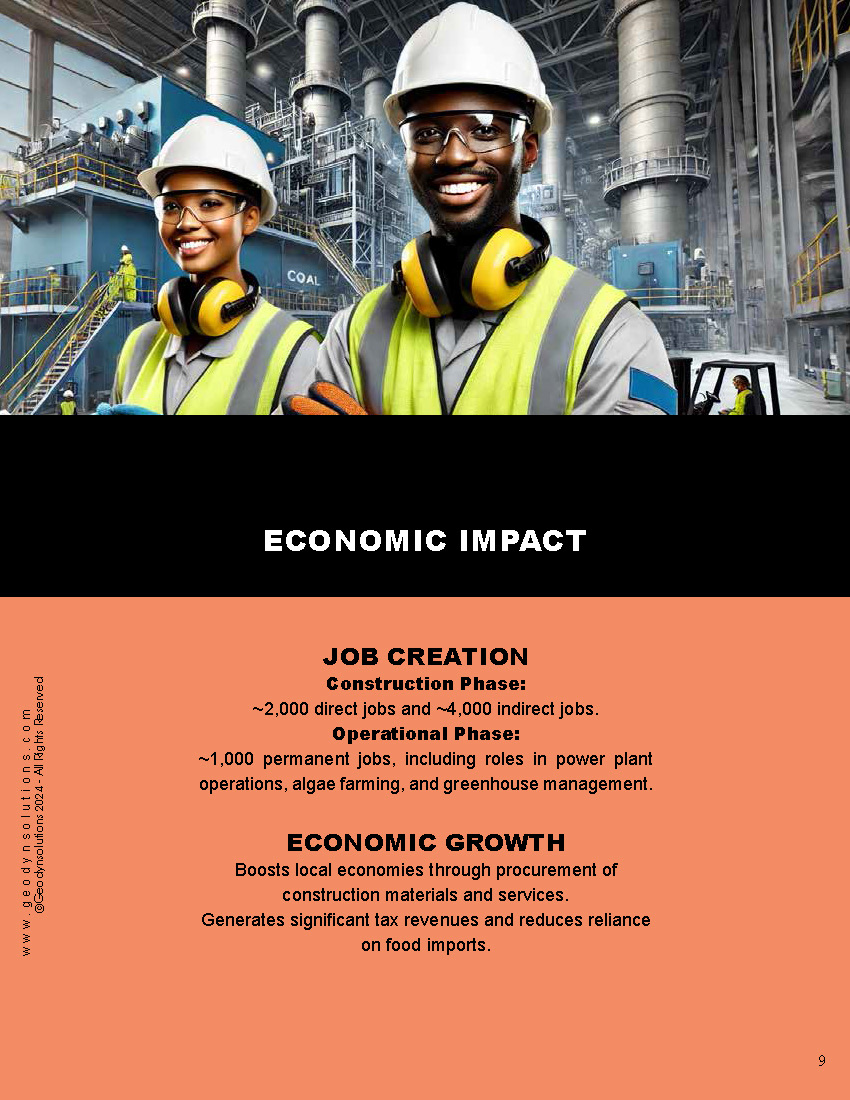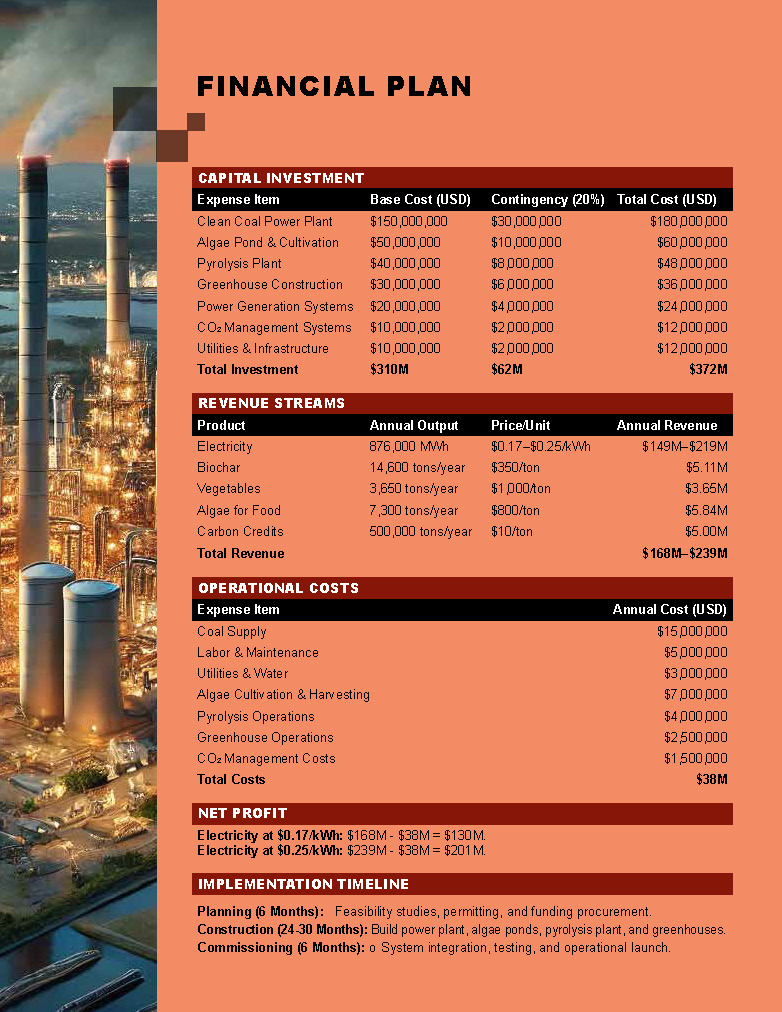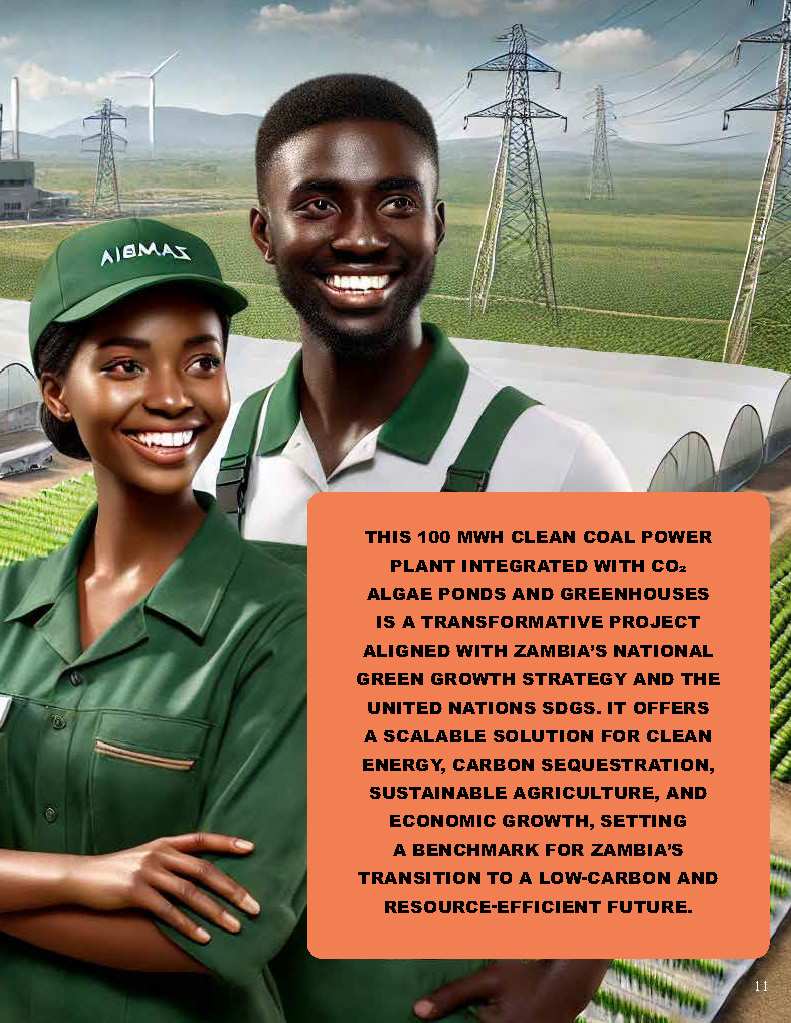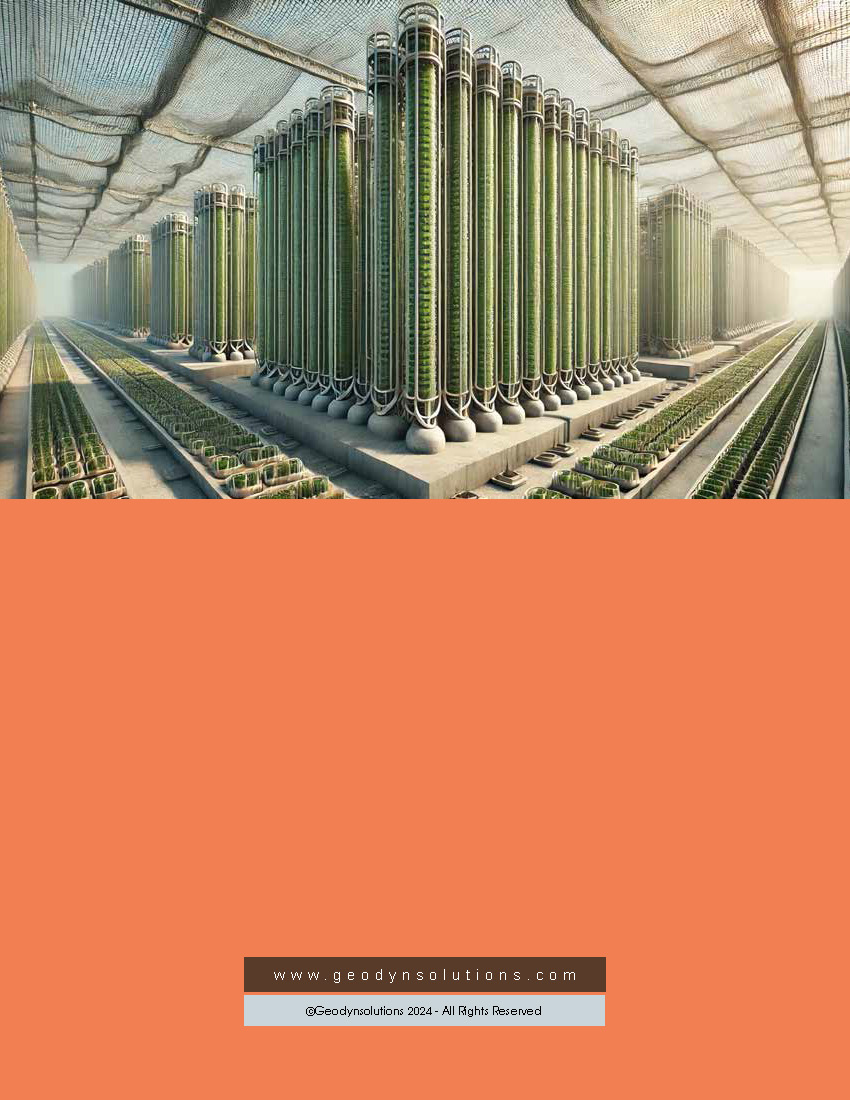Comprehensive Business Plan: 100 MWh Clean Coal Power Plant with CO₂ Algae Pond and Greenhouse Integration
Executive Summary
This business plan outlines the construction of a 100 MWh clean coal power plant integrated with an algae pond facility and greenhouses. The project is designed to capture and utilize CO₂ emissions to cultivate algae for biofuels, biochar, and food products while using 25% of the captured CO₂ to enrich greenhouses for vegetable production. The electricity generated will be sold at $0.17/kWh or $0.25/kWh, depending on the market. Additional revenue will come from biochar, vegetables, algae-derived food products, and carbon credits.
This innovative project contributes to clean energy, carbon sequestration, and sustainable agriculture, achieving an attractive ROI of 38.5% (at $0.17/kWh) to 59.5% (at $0.25/kWh). It aligns with Zambia’s National Green Growth Strategy (GGS), which promotes development pathways for a low-carbon, resource-efficient, resilient, and socially inclusive economy by 2030. Additionally, the project supports the United Nations Sustainable Development Goals (SDGs):
- SDG 7: Affordable and Clean Energy.
- SDG 12: Responsible Consumption and Production.
- SDG 13: Climate Action.
- SDG 15: Life on Land.
Project Overview
Goals and Objectives
- Generate 100 MWh of clean electricityusing advanced carbon capture technology.
- Capture 90% of CO₂ emissionsand utilize them for algae cultivation and greenhouse production.
- Develop sustainable products: bio-oil, syngas, biochar, and vegetables.
- Diversify revenue through electricity sales, carbon credits, and agricultural outputs.
- Promote environmental sustainability, job creation, and food security.
- Align with Zambia’s National Green Growth Strategy (GGS) and SDGs.
Location
- Industrial or rural areawith access to coal, water, and grid connectivity.
- Approximate land requirement: 100 acres.
Key Features
- Clean Coal Power Plant
- Capacity: 100 MWh.
- Technology: Advanced combustion with 90% carbon capture.
- Purpose: Generate reliable base-load electricity for Zambia’s growing energy needs.
- Algae Cultivation Facility
- Area: 50 acres of raceway ponds.
- CO₂ Utilization: 75% of captured CO₂.
- Output: 200 tons/day of algae biomass.
- 90% Biomass: Pyrolyzed into bio-oil, syngas, and biochar.
- 10% Biomass: Used for food and animal feed production.
- Greenhouses
- Area: 20 acres.
- CO₂ Utilization: 25% of captured CO₂.
- Output: 3,650 tons/year of high-value vegetables (e.g., tomatoes, cucumbers, leafy greens).
- Pyrolysis Plant
- Processes algae biomass into:
- Bio-oil: 50% of biomass (~100 tons/day).
- Syngas: 30% of biomass (~60 tons/day).
- Biochar: 20% of biomass (~40 tons/day).
- Processes algae biomass into:
- Power Generation
- Additional electricity from:
- Bio-oil turbines: Generate 30 MWh/day.
- Syngas turbines: Generate 10 MWh/day.
- ORC systems: Generate 5 MWh/day from waste heat recovery.
- Additional electricity from:
Technical Specifications and Processes
Clean Coal Power Plant
- Technology: Advanced combustion with 90% CO₂ capture.
- Purpose: Provide reliable base-load electricity with minimal emissions.
- Carbon Capture: Captured CO₂ is repurposed for algae cultivation and greenhouse operations.
Algae Pond System
- Area: ~50 acres of raceway ponds.
- CO₂ Utilization: 75% of captured CO₂.
- Output: ~200 tons of algae biomass daily, supporting biofuel production and food security.
Pyrolysis Process
- Input: 180 tons/day of algae biomass.
- Outputs:
- Bio-oil: 50% of biomass (~100 tons/day).
- Syngas: 30% of biomass (~60 tons/day).
- Biochar: 20% of biomass (~40 tons/day).
Greenhouses
- Area: ~20 acres.
- CO₂ Utilization: 25% of captured CO₂.
- Outputs: ~3,650 tons/year of vegetables for local markets.
Power Generation Units
- Primary Source: 100 MWh from the clean coal plant.
- Supplementary Sources:
- Bio-oil turbines: Generate 30 MWh/day.
- Syngas turbines: Generate 10 MWh/day.
- ORC units: Generate 5 MWh/day using waste heat recovery.
Environmental Benefits
- CO₂ Sequestration:
- Prevents the release of 500,000 tons of CO₂ annually.
- Biochar provides long-term carbon storage while improving soil health.
- Sustainable Outputs:
- Algae absorbs 30-50 times more CO₂ than terrestrial plants.
- Contributes to a circular economy by transforming CO₂ into valuable products.
- Food Security:
- Provides 3,650 tons/year of vegetablesand 7,300 tons/year of algae-based food products, addressing local food shortages.
Economic Impact
Job Creation
- Construction Phase: ~2,000 direct jobs and ~4,000 indirect jobs.
- Operational Phase: ~1,000 permanent jobs, including roles in power plant operations, algae farming, and greenhouse management.
Economic Growth
- Boosts local economies through procurement of construction materials and services.
- Generates significant tax revenues and reduces reliance on food imports.
Financial Plan
Capital Investment
Expense Item | Base Cost (USD) | Contingency (20%) | Total Cost (USD) |
Clean Coal Power Plant | $150,000,000 | $30,000,000 | $180,000,000 |
Algae Pond & Cultivation | $50,000,000 | $10,000,000 | $60,000,000 |
Pyrolysis Plant | $40,000,000 | $8,000,000 | $48,000,000 |
Greenhouse Construction | $30,000,000 | $6,000,000 | $36,000,000 |
Power Generation Systems | $20,000,000 | $4,000,000 | $24,000,000 |
CO₂ Management Systems | $10,000,000 | $2,000,000 | $12,000,000 |
Utilities & Infrastructure | $10,000,000 | $2,000,000 | $12,000,000 |
Total Investment | $310M | $62M | $372M |
Revenue Streams
Product | Annual Output | Price/Unit | Annual Revenue (USD) |
Electricity | 876,000 MWh | $0.17–$0.25/kWh | $149M–$219M |
Biochar | 14,600 tons/year | $350/ton | $5.11M |
Vegetables | 3,650 tons/year | $1,000/ton | $3.65M |
Algae for Food | 7,300 tons/year | $800/ton | $5.84M |
Carbon Credits | 500,000 tons/year | $10/ton | $5.00M |
Total Revenue | $168M–$239M |
Operational Costs
Expense Item | Annual Cost (USD) |
Coal Supply | $15,000,000 |
Labor & Maintenance | $5,000,000 |
Utilities & Water | $3,000,000 |
Algae Cultivation & Harvesting | $7,000,000 |
Pyrolysis Operations | $4,000,000 |
Greenhouse Operations | $2,500,000 |
CO₂ Management Costs | $1,500,000 |
Total Costs | $38M |
Net Profit
- Electricity at $0.17/kWh: $168M – $38M = $130M.
- Electricity at $0.25/kWh: $239M – $38M = $201M.
Implementation Timeline
- Planning (6 Months):
- Feasibility studies, permitting, and funding procurement.
- Construction (18 Months):
- Build power plant, algae ponds, pyrolysis plant, and greenhouses.
- Commissioning (6 Months):
- System integration, testing, and operational launch.
Conclusion
This 100 MWh clean coal power plant integrated with CO₂ algae ponds and greenhouses is a transformative project aligned with Zambia’s National Green Growth Strategy and the United Nations SDGs. It offers a scalable solution for clean energy, carbon sequestration, sustainable agriculture, and economic growth, setting a benchmark for Zambia’s transition to a low-carbon and resource-efficient future.

